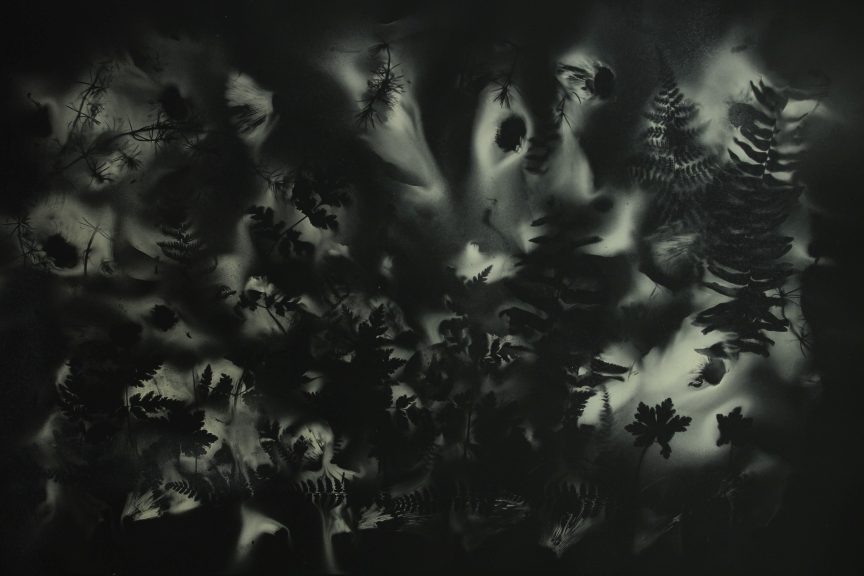You know what they say: a picture’s worth a billion spores.
Massachusetts-based artist Madge Evers works in a surprising medium: mushroom spore prints. Each of her exquisite works starts with a fungal form—either grown in her garden or foraged from the woods and fields that surround her home. Evers gently places her muse upon her canvas, then waits until the specimen starts to release its spores. These tiny objects—about 16 billion of them in a typical field mushroom—float through the air and settle on the canvas below, leaving behind gorgeous, shadowlike traces.
In this interview, we ask Evers about her process, her relationship to nature, and the incredible wonders of the fungal world.
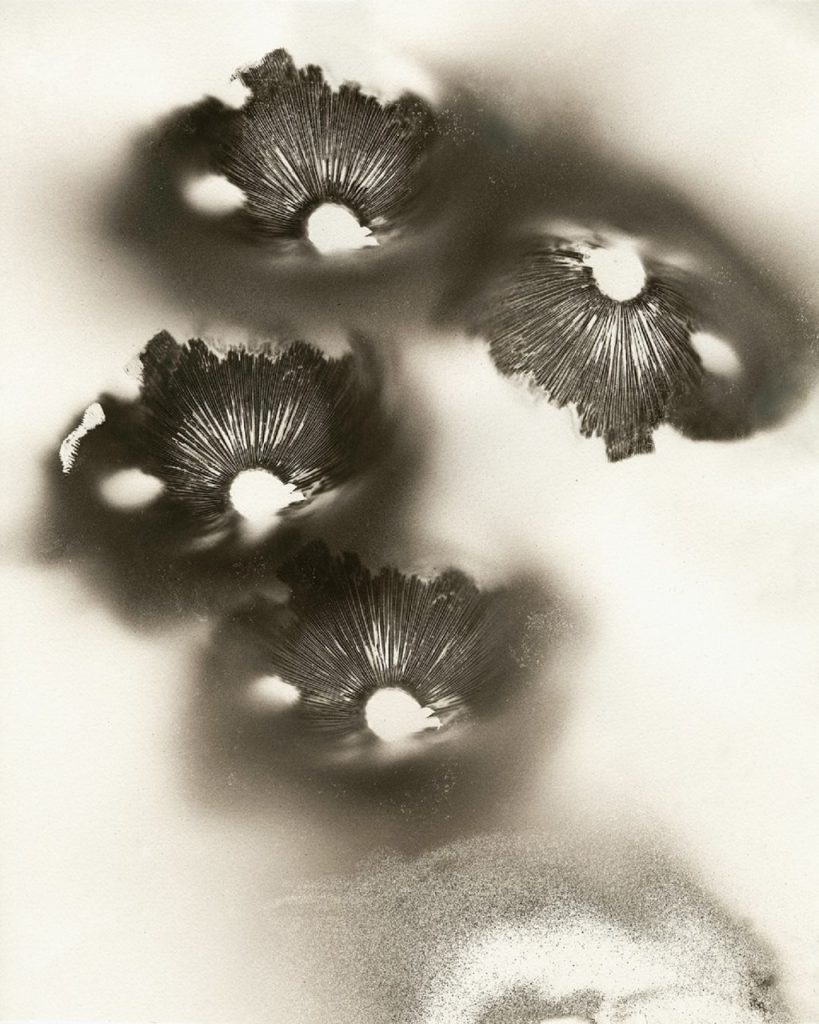
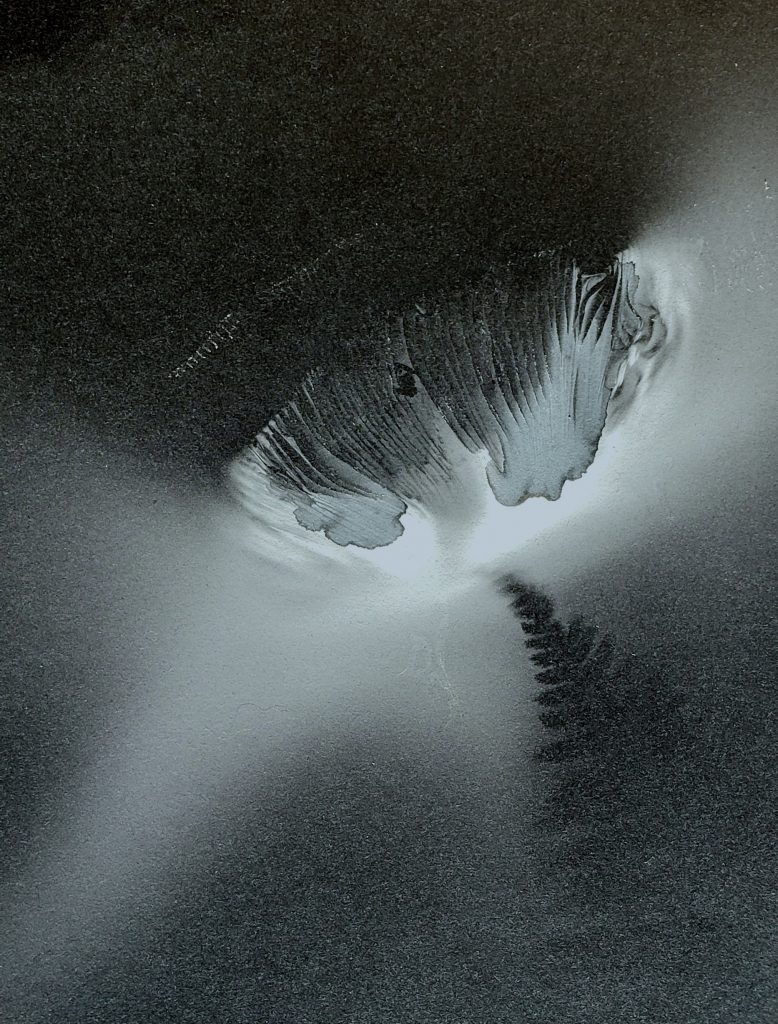
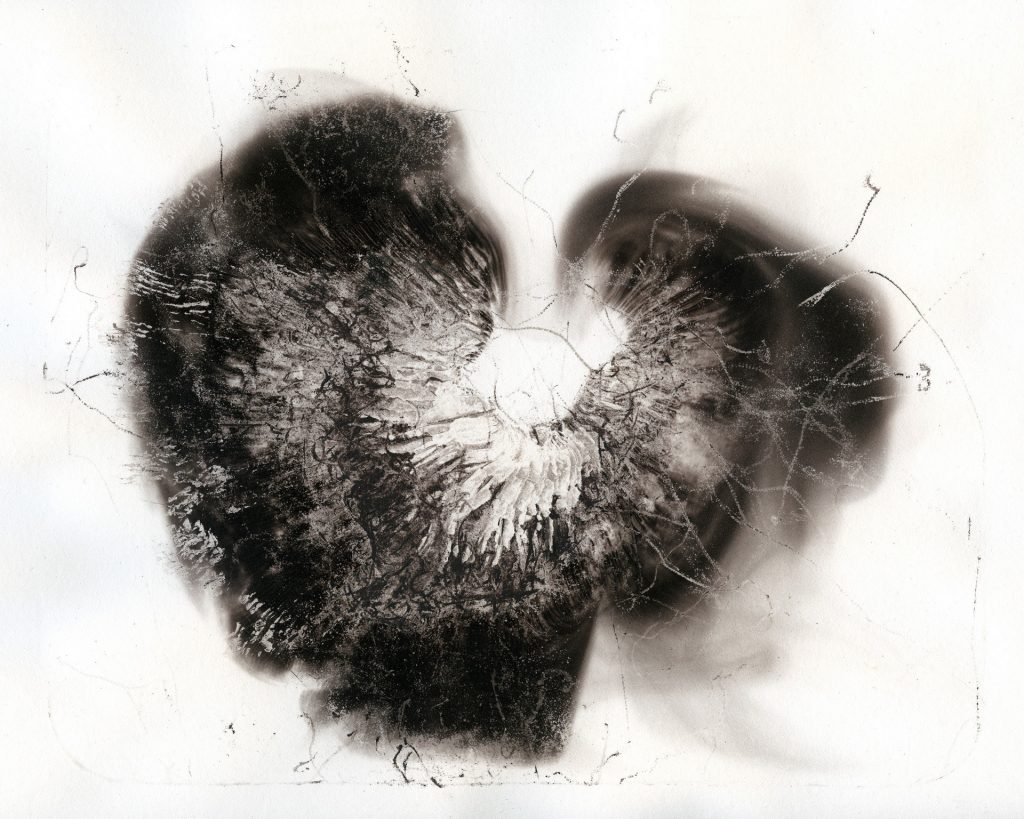
Which came first in your life, the science or the art?
Art came first. The spore print art I create might be traced back to a wonderful art teacher from my childhood who encouraged experimentation. Or to my work as a black and white photographer. And definitely to gardening, which, in order to understand the magic of how things grow, inspired an interest in science.
Which sciences relate to your art practice?
Botany, chemistry, and entomology relate to my art practice, but mycology is the foundation. I make mushroom spore prints, a practice that mycologists use for identification and propagation. Here’s how it works: one places a mushroom, gill, or pore side down, on a piece of paper. After several hours, a mushroom may release any number of its billions of tiny spores, and a powdery residue of spores appears on the paper. The spore color is then used as a diagnostic tool for identification. I first learned to use field guides and spore printing so I could safely consume the mushrooms I foraged. Then I started to cultivate mushrooms in my shady yard. When I made the first spore print to identify that initial fruiting of home-growns, the image transcended identification. To me, the image and its familiar patterns suggested stories that were both old and modern. The scientific practice led to an artistic awakening for me.
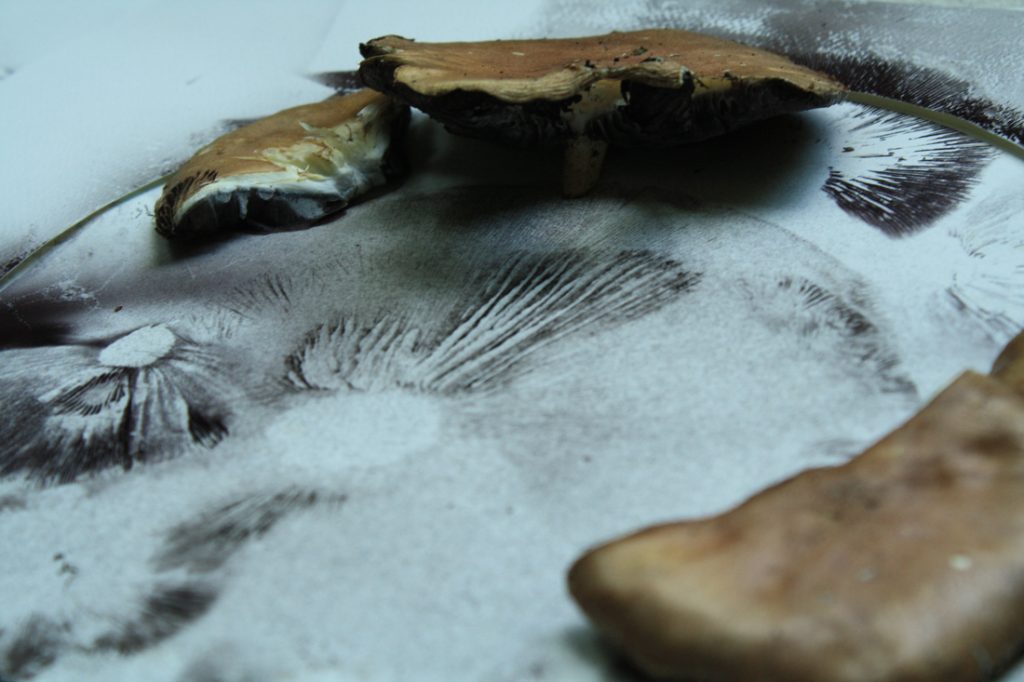

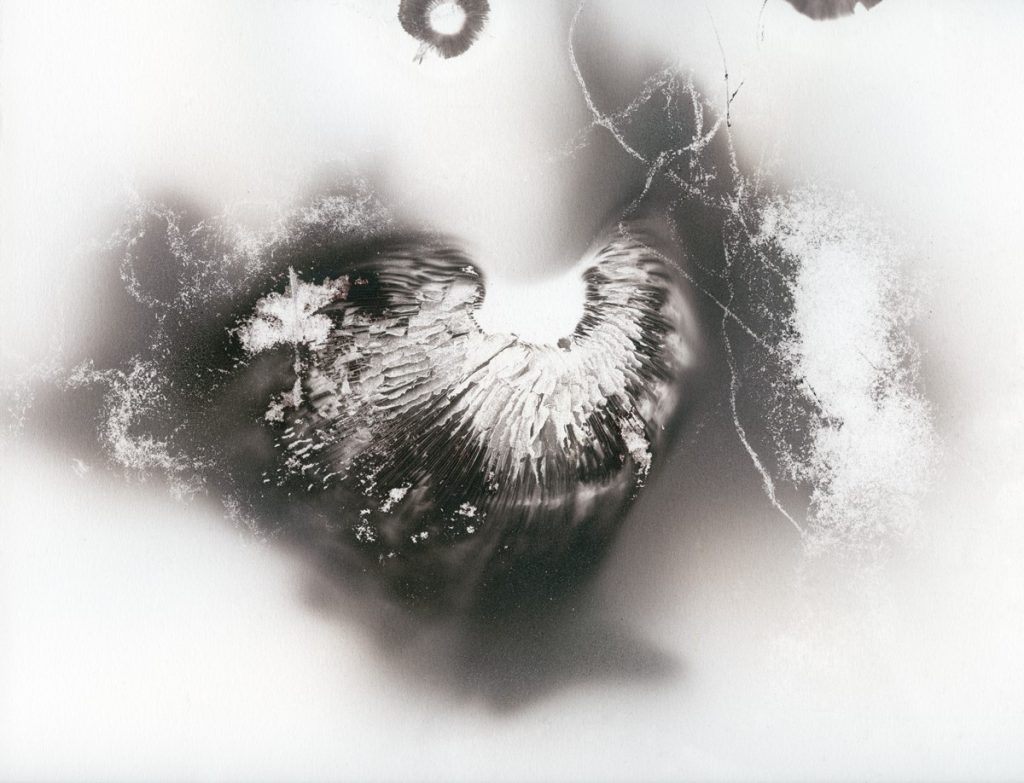
What materials do you use to create your artworks?
I experiment with paper and use various fixatives, but my art depends on mushrooms and the spores that drop from their gills. I use whatever mushrooms I can find. I cultivate stropharia rugosoannulata, but also roam the outdoors to gather. I scan sidewalks, leaf litter, wood chips and fallen logs for whatever has, literally, popped-up. Size doesn’t matter. Each mushroom variety possesses its own spore charms. Some are velvety black or snowy white; some purplish grey, falling with photographic precision or in a smoky drift; others make a lush salmon-colored powder. I am beholden to the fruiting bodies of fungi.
Artwork/Exhibition you are most proud of:
In May of 2018, I was in a three-person show that featured science-based art at the Aurora Gallery in Worcester, Massachusetts. It was an honor to be included with the thoughtful and talented Carrie Crane and Catherine Wilcox-Titus.
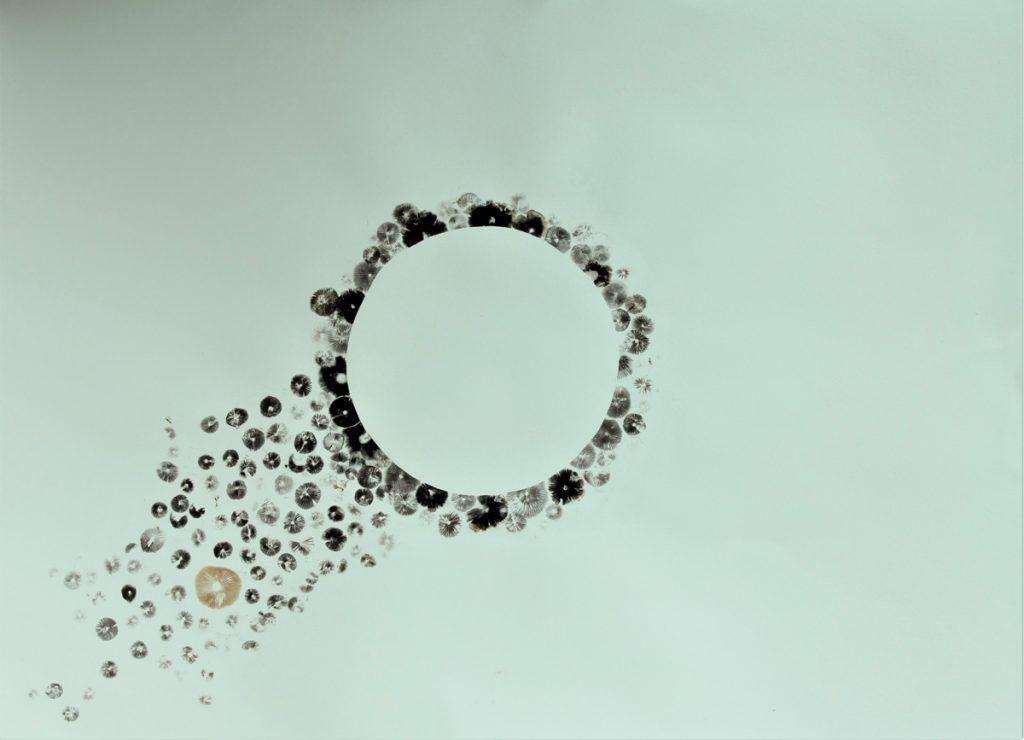

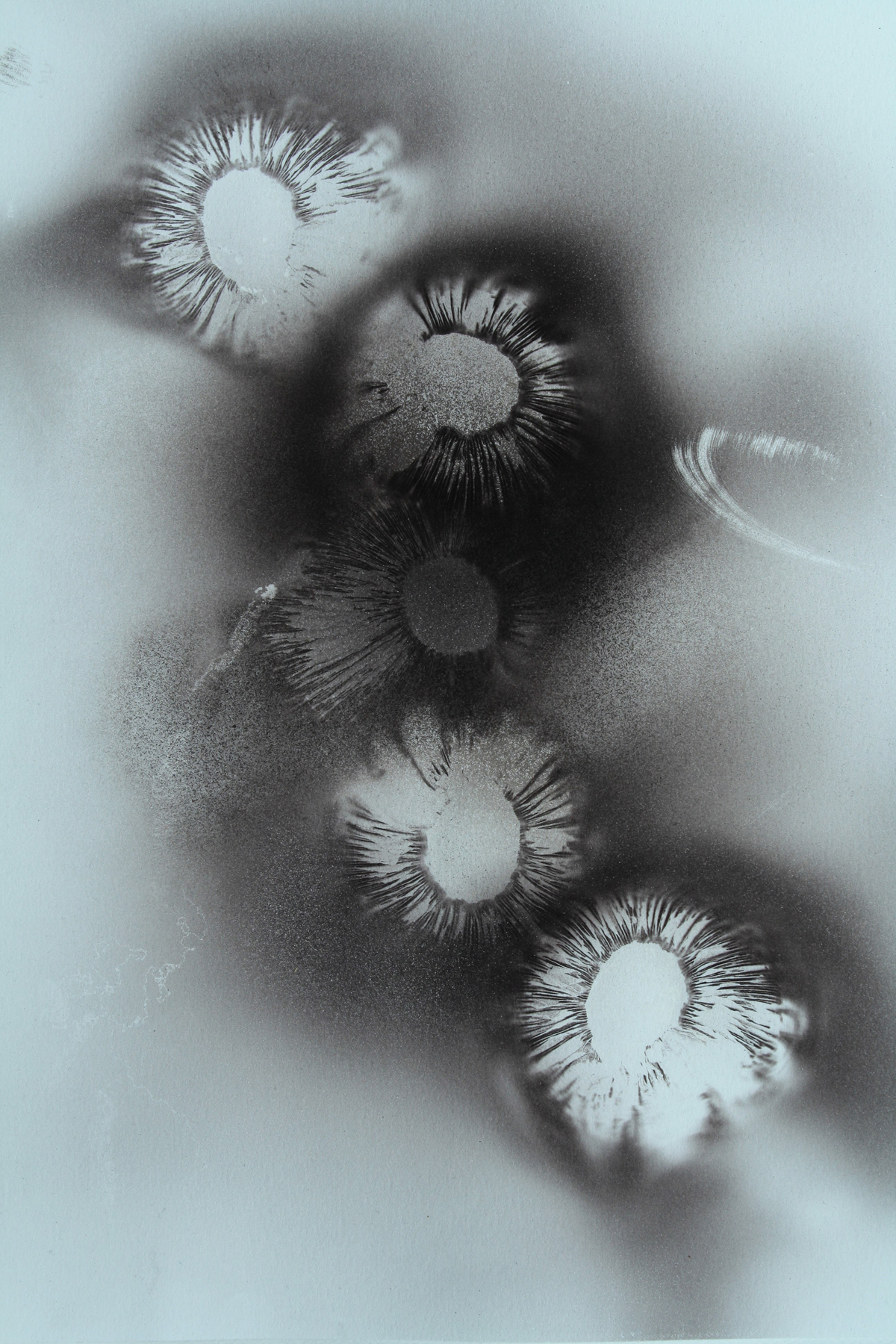
Which scientists and/or artists inspire and/or have influenced you?
Artists and scientists who study and find beauty in the everyday and the immediate world inspire me. Mysteries abound. I am inspired by my family and friends and by mycologists Paul Stamets and David Arora, the photographer Sally Mann, painter Celeste Dupuy-Spencer, ink-maker Jason Logan, and so many others.
Is there anything else you want to tell us?
Fungi are remarkable and worth knowing more about. Check out mycoremediation, the medicinal use of psilocybe, and the Humongous Fungus in Oregon to sample some very cool information about the fungi kingdom.
For more, visit Madge Evers’ website, or follow her on Instagram @_sporeplay.
Share this Post

